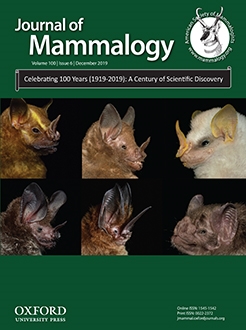Spatial relationships among conspecifics can provide insights into numerous aspects of social behavior. Spatial data may be particularly important for characterizing the behavior of difficult-to-study species such as subterranean rodents, direct observations of which are challenging. To characterize the social organization of the cururo (Spalacopus cyanus), a subterranean species in the rodent family Octodontidae, we used radiotelemetry to quantify spatial relationships within populations of this species located in Parque Nacional Bosque Fray Jorge and Santuario de la Naturaleza Yerba Loca, Chile. Specifically, we sought to determine if adults in this diurnal species share burrows and subterranean nests, the two criteria typically used to identify subterranean rodents as social. Analyses of radio fixes collected during February–March 2003 revealed that cururos at both Fray Jorge and Yerba Loca shared nighttime nest sites; cluster analyses of these data identified multiple spatially distinct subsets of adults in each population. Overlap of minimum convex polygons constructed from radio fixes collected during daylight hours suggested burrow sharing by animals in both populations. Cluster analyses of overlap values revealed the same spatially distinct groups of individuals identified from analyses of nest sharing; in addition, these analyses revealed one cluster of animals in each population that was not evident from analyses of nighttime data. Collectively, these results confirm that cururos are social, with adults in both study populations sharing burrow systems and communal nests. Our findings add to the growing understanding of social organization in octodontid rodents and reveal a new system for comparative studies of the ecology and evolution of behavioral variation in burrow-dwelling mammals.
How to translate text using browser tools
30 July 2019
Spatial relationships among free-living cururos (Spalacopus cyanus) demonstrate burrow sharing and communal nesting
Eileen A. Lacey,
Shannon L. O'brien,
Raúl Sobrero,
Luis A. Ebensperger
ACCESS THE FULL ARTICLE

Journal of Mammalogy
Vol. 100 • No. 6
December 2019
Vol. 100 • No. 6
December 2019
caviomorphs
cururos
octodontids
social structure
Spalacopus
spatial relationships




